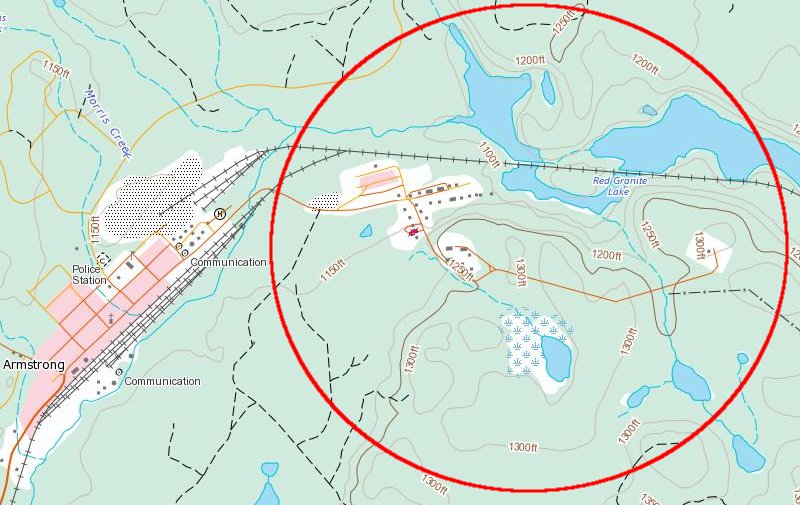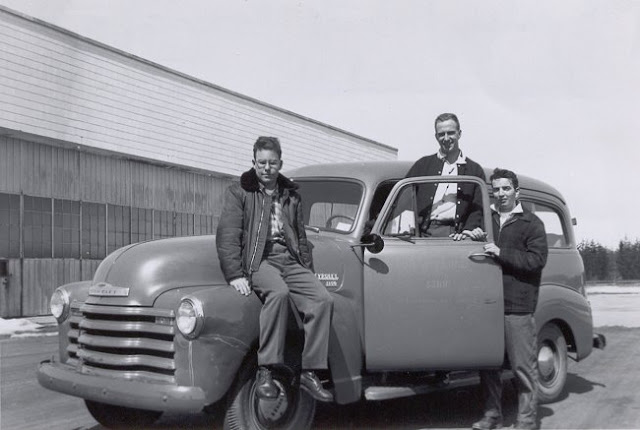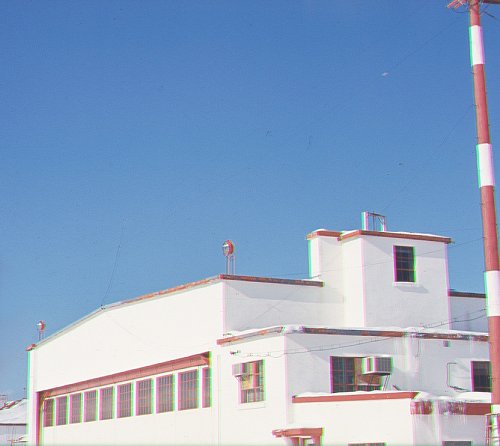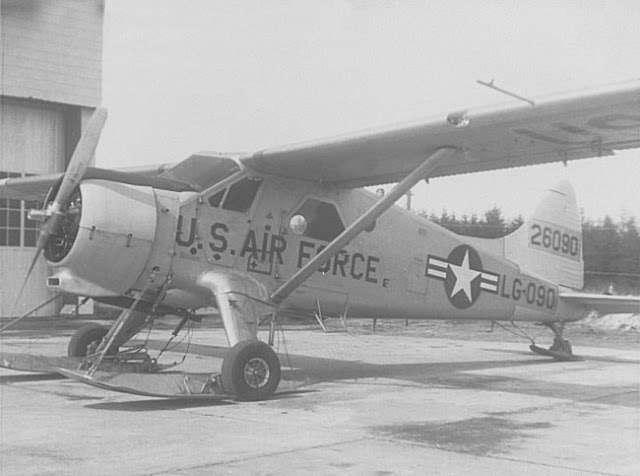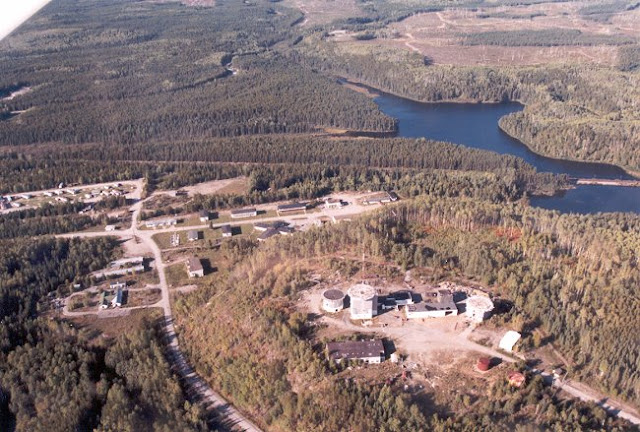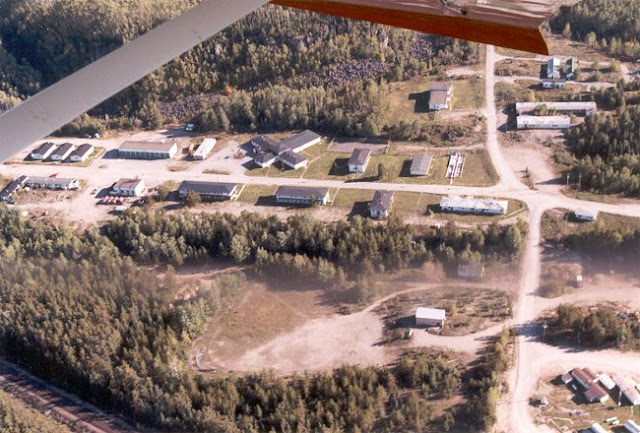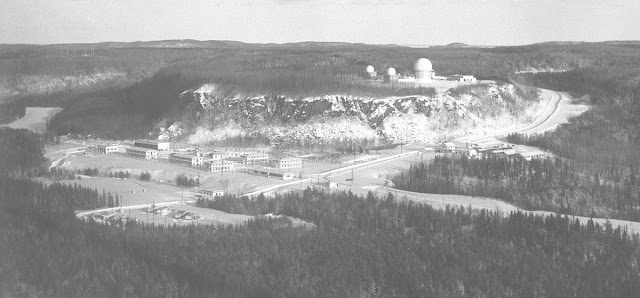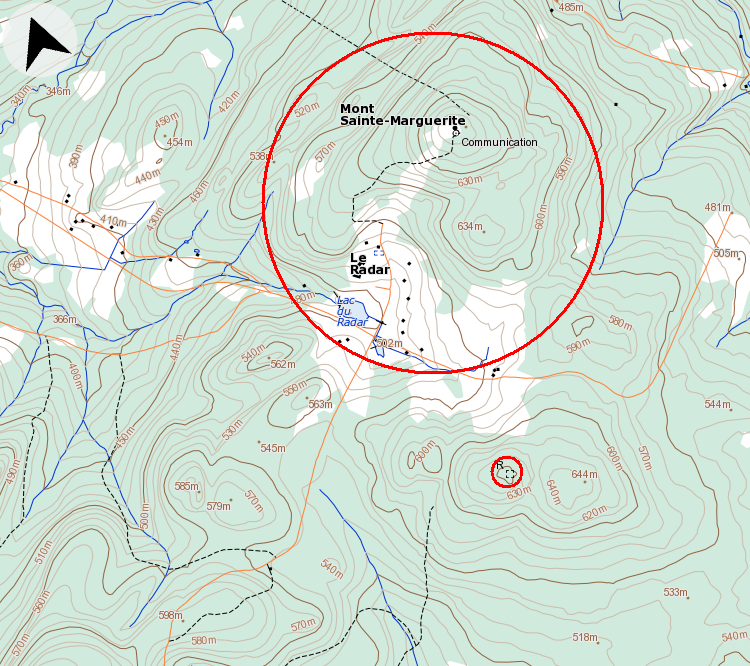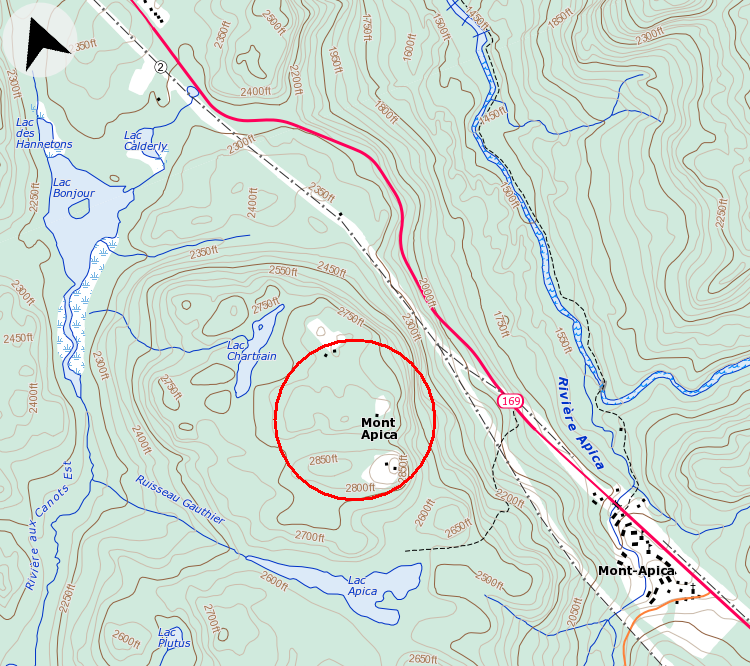Canadian National Telegraphs (Canadian National Telegraph Co? / CNT) served the telecommunications needs of Canada's Western Arctic before it was merged in the 1970 with Northwest Telecommunications, now NorthwesTel. In 1963 they were awarded the contract to provide the telecom backbone which would link DEW Line sites with command and control in the South.
Originally I thought these North-South troposcatter links were built by the military, but it turns out they were contracted to corporations (CNT in this case), mostly funded by the military, but other services (like long distance telephone) rode on their coat-tails, and local communities (arguably) benefited.
From what little documentation I could find, the troposcatter link between Galena Hill and Arctic Red River was one "hop", unlike the Hay River / Lady Franklin Point three hop link. I would guess the rest of the way was by LOS Microwave(?).
Unfortunately, the satellite imagery I've been able to find is rather sub-par, and I cannot positively identify where the Galena Hill site is. There are several mines in the area, so I'm uncertain what is mine-related or troposcatter facility related on the fuzzy imagery. I believe the troposcatter antennas would have been near the NE end of Galena Hill between Elsa and Keno, since the giant "billboard" antennas had to point NNE toward Arctic Red River. The signal was being transmitted as a ~400Km skip off the troposphere, so the angle of the antenna would have been very shallow to the horizon.
(From the Keno Mining Museum)
Galena Hill Troposcatter Site (somewhere around there)
View Larger Map
At the other end of this troposcatter hop is Arctic Red River, now known as Tsiigehtchic. The imagery from that end is much better than the Galena Hill area.
Arctic Red River Troposcatter Site (67.41662, -133.60986)
View Larger Map
Putting it all together here is a map of the two sites and the link between them.
Originally I thought these North-South troposcatter links were built by the military, but it turns out they were contracted to corporations (CNT in this case), mostly funded by the military, but other services (like long distance telephone) rode on their coat-tails, and local communities (arguably) benefited.
From what little documentation I could find, the troposcatter link between Galena Hill and Arctic Red River was one "hop", unlike the Hay River / Lady Franklin Point three hop link. I would guess the rest of the way was by LOS Microwave(?).
Unfortunately, the satellite imagery I've been able to find is rather sub-par, and I cannot positively identify where the Galena Hill site is. There are several mines in the area, so I'm uncertain what is mine-related or troposcatter facility related on the fuzzy imagery. I believe the troposcatter antennas would have been near the NE end of Galena Hill between Elsa and Keno, since the giant "billboard" antennas had to point NNE toward Arctic Red River. The signal was being transmitted as a ~400Km skip off the troposphere, so the angle of the antenna would have been very shallow to the horizon.
 |
| View from Keno Hill, near Galena Hill Courtesy of Branko Balaz Original: http://www.mindat.org/photo-269114.html |
(From the Keno Mining Museum)
 |
| Courtesy of Branko Balaz Original: http://www.mindat.org/photo-269109.html |
Galena Hill Troposcatter Site (somewhere around there)
View Larger Map
At the other end of this troposcatter hop is Arctic Red River, now known as Tsiigehtchic. The imagery from that end is much better than the Galena Hill area.
Arctic Red River Troposcatter Site (67.41662, -133.60986)
View Larger Map
Putting it all together here is a map of the two sites and the link between them.






















